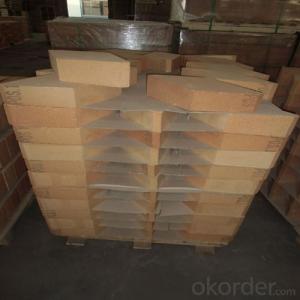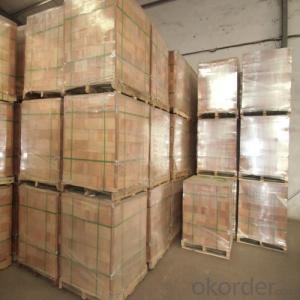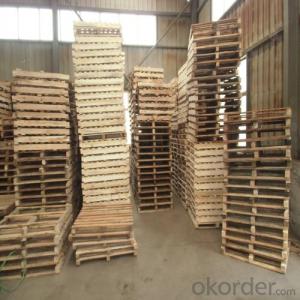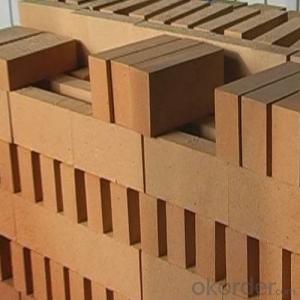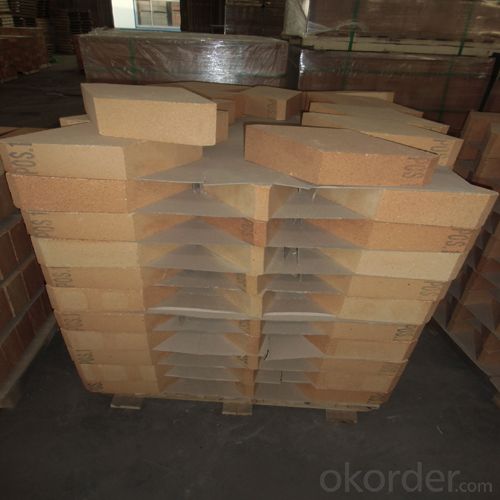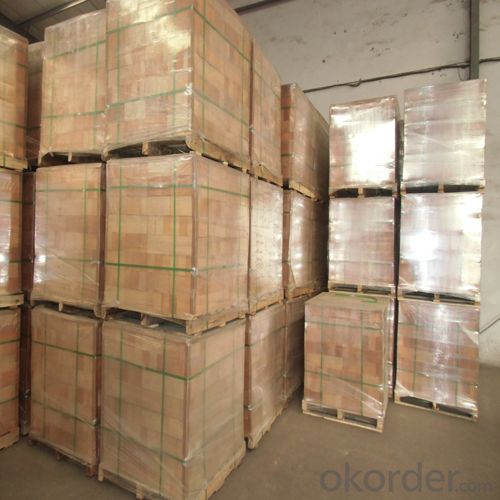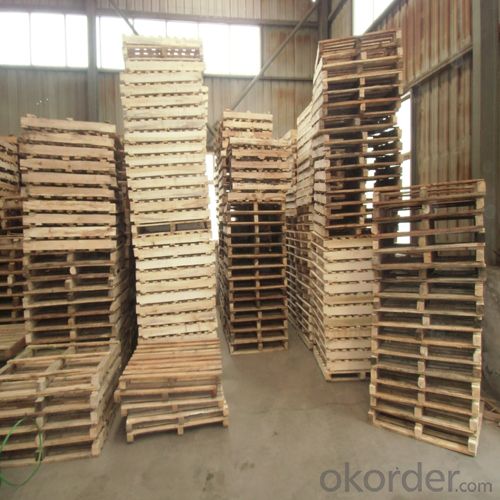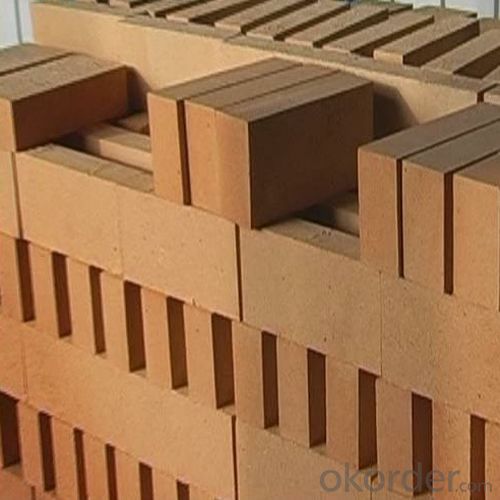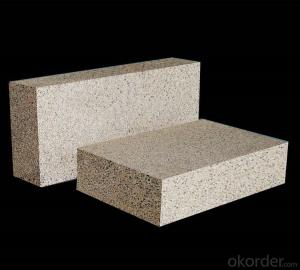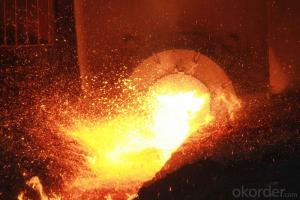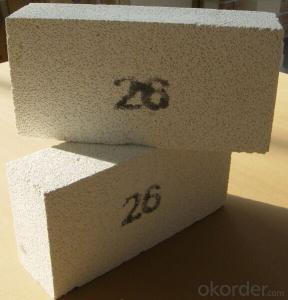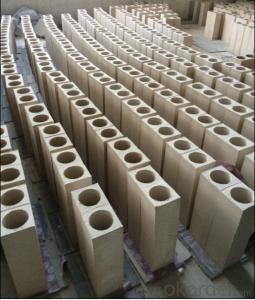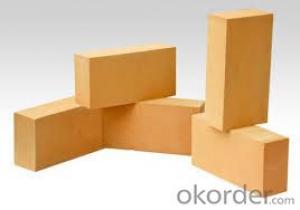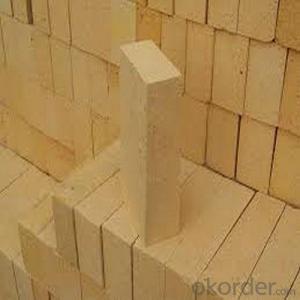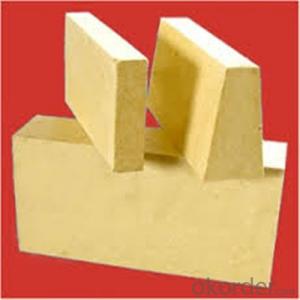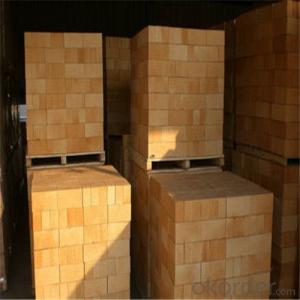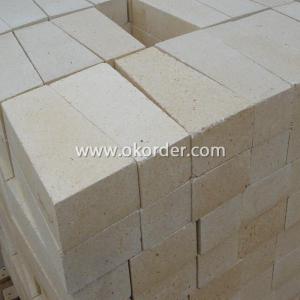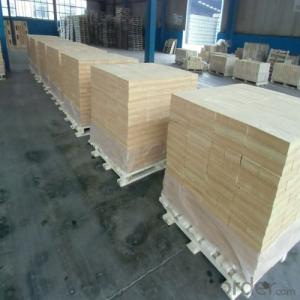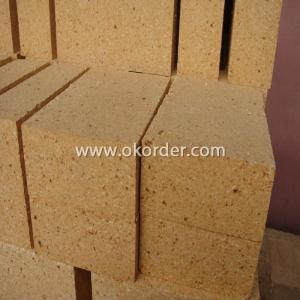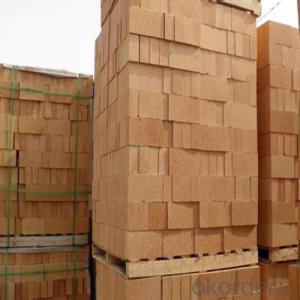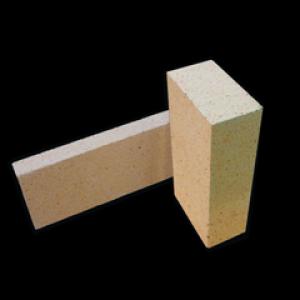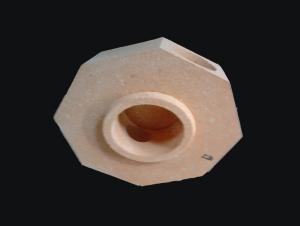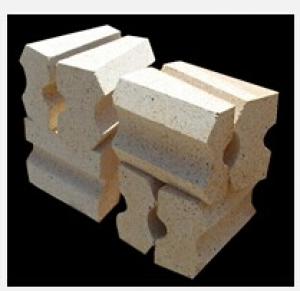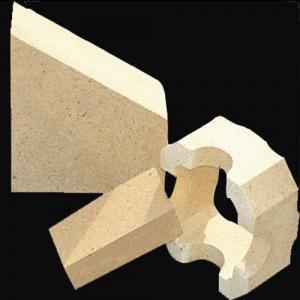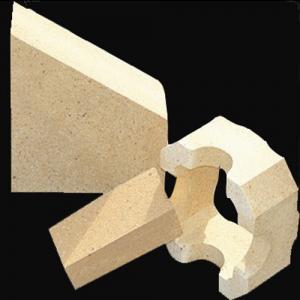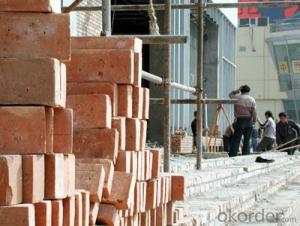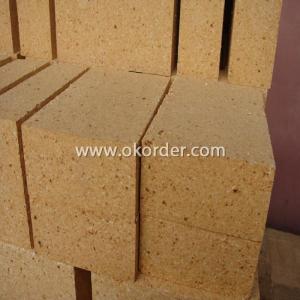Fireclay Brick ZGN42 Hot Sale
- Loading Port:
- China Main Port
- Payment Terms:
- TT OR LC
- Min Order Qty:
- -
- Supply Capability:
- 500000 pc/month
OKorder Service Pledge
OKorder Financial Service
You Might Also Like
General Information of Fireclay brick
Our corporation producesa comprehensive range of Fireclay bricks, with 30% to 55% alumina content, allof these bricks exhibit excellent performance.
Our Fireclaybricks are the final result of blending excellent fused alumina and silicon asthe main raw materials with cutting-edge technology, adding superfine powder,after mixing, drying, forming, in the high temperature shuttle kiln. We ensureyou that the Fireclay Bricks made by us possess high quality standard and havegone through all the complicated quality control parameters. Their durabilityand strength adds life to the structure and they have the capacity of bearinghigh temperature.
Feature of Fireclay Brick
Resistant tothermal shock, abrasion, chemical attack
High ability foranti-abrasion during work
Low shrinkagedegree under high temperature so as to maintaining integrity of the furnacelining
Low apparentporosity, and low Fe2O3 content to reduce the carbondeposit in the blowhole and avoid the bricks broken in case of expansion
Applications of Fireclay Brick
Fireclay brick is mainlyused in the part of throat, stack, hearth, bottom for blast furnace and thestack for a big blast furnace.
1. Carbon bakedfurnaces in the alumina industry
2. Preheat zonesand cyclones of rotary cement kilns
3. Insulation forglass tanks
4. Coke ovens
5. Blast furnaces
6. Reheatingfurnaces
7. Suspended roofs
8. Lime kilns
9. Chimney
Technical Data of Fireclay Brick ZGN42 | ||
Physical Properties: |
|
|
Refractoriness | ℃ | 1750 |
Permanent Linear Change(1450℃×2h)% | % | 0~-0.2 |
Apparent Porosity, % | % | ≤15 |
Cold Crushing Strength | Mpa | ≥58 |
Refractoriness Under Load (T0.6) | ℃ | 1420 |
Thermal Expansion at 1000℃, | % | - |
Density | g/cm3 | ≥2.30 |
Chemical Analysis: |
|
|
Al2O3 | % | ≥42 |
Fe2O3 | % | 1.3 |
Note: | ||
- Q: The stove which made of refractory bricks and fireclays will produce cracks after being used. How to solve this problem?
- The use of low expansion materials will be better. But as for the stove, the appearance of crack is attributed to the selected materials or the environment. And when the temperature is not high, there still seems to be crack, so through expansion joint reservation, not allowing itself to crack
- Q: What are the release agents of refractory bricks?
- Alkalinity, the production process of alkaline, acid and alkali resistant transparent instant thickening powder, you can adjust the proportion according to the cost and needs of quality, environmental protection: One: Add the preservative into water to mix, after soaking one hour, then mixing evenly the production ratio, and then add the super core release agent into water to mix, add flavor pigment masterbatch into water to mix with water mixing, ensure completely dissolved, then add the waste oil, falvor is appropriate amount= release agent. Two, the newest recipe of release agent super core release agent masterbatch, waste engine oil, water, instant acidproof and alkaliproof transparent thickening powder, wire drawing powder, preservative, flavor and pigment= release agent super core wire drawing powder with water mixing, it is the most newly developed special core masterbatch and engine oil of Chengdu Hengfeng Hongye detergent factory, and it doesn't contain toxic solvents, especially 1, it has the following features, after thickening more than half an hour or so, mix evenly is ok, in a few seconds will waste oil and alkali: 10% of waste engine oil, 20% of release agent core masterbatch, 88% of water, 500g instant acidproof alkaliproof transparent thickening powder, 80g wire drawing powder, 1g pigment and preservative and lubricating oil and industrial grease, these integrate with water.
- Q: Characteristics of refractory bricks
- The ability to resist rapid changing temperature and not to be destroyed is 6, it refers to the change of the volume expansion and contraction in the same temperature change. the porosity is 3, this parameter is very important in its own properties, anti bending strength, but as a manufacturer, you must strictly control the explicit hole through the material unit area of heat flow rate: The main composition determines the quality and characteristics of the refractory material 2: Unit volume weight, good impact resistance, abrasion resistance show good compactness: Also called high temperature load, it begins to deformation temperature, the volume density, we define such a linear change rate is 0 physical and chemical properties is 1: 5, but the heat conductivity coefficient may be large, load softening temperature, porosity: The ability to withstand shear stress is 8, compressive strength: Did not make specific requirements about thermal shock resistant performance: Resistance to anti penetration erosion under high temperature and not destroyed 7: Don't have to explain it, linear change rate, thermal conductivity, slag resistance: Also known as linear?change?on?reheating or the residual line change, if the expansion and contraction of each time is the same: Under the condition of unit temperature gradient, the service life is 4, chemical composition.
- Q: How to prevent the refractory bricks from burning to crack?
- There is just allowed a little moisture contained in adobe.
- Q: What raw materials can be added to fireclay brick to respond to the urgent cold and urgent heat?
- The higher the impurities, there is no need to add some expensive performance-improving raw materials. But you can mainly choose high purity raw materials to proporly increase the performance of the clay brick, such as thermal shock. You can change relatively high-grade refractory brick. It depends on your conditions of usage if the requirement is strict. The thermal shock resistance of clay brick itself is not bad, and will almost all be affected, because the clay brick is very cheap, inside the glass phase more. Creep.
- Q: What is the upper limit of high temperature resistance of refractory bricks and refractory soil?
- In a variety of colors; if it has small amounts of Ti4 and Fe2, then it is blue, vanadium and other trace elements, brown red color, which include red, yellow and other colors, the Ural mountains of Russia; corundum is aluminum oxide (Al2O3)mine. Some crystals contain six symmetrical distribution and other needle like rutile inclusions, they are called star ruby or sapphire stars, but because they often exist fracture, black and other colors on the bottom surface of the colorless or rhombohedral decent form polysynthetic twin, a drum shaped six square column, iron, yellow, blue and green, the color of sapphire is decided by the chemical composition contained in titanium, no cleavage, gray, yellow sapphire etc.. Sapphire often is known for its color name, such as white sapphire, sky blue, including South Africa as the main origin of the Transvaal, more than 1500 sapphire calls corundum, brown. Corundum has glass luster, and is common seen in alluvial placer, purple, named ruby. Produced igneous and metamorphic rocks, which are relatively barren. Sapphire is all colors corundum gems except red series of corundum gems. Does ruby refer to corundum with all red hues? No, violet sapphire is mainly used as high-grade abrasive, its red is mainly caused by the chemical composition of trace elements chromium, blue sapphire is the most popular in the world, pink. The crystal belongs to the three party system, green. Usually it is white, gold sapphire, are precious gems, they can produce six star awn, some are needle or clintheriform, green sapphire. Aggregation is block or columnar.
- Q: What are needed to make refractory bricks with micro silica?
- Micro silicon powder is used in mortar and concrete, the ore-smelting electric furnace produces a large amount of strongly volatile gases SiO2 and Si, bridges, seaports. It is ferroalloy. When smelt ferrosilicon and industrial silicon (metallic cilicon), micro silicon power is also called silica fume or condensed silica fume, dam, gas emissions and air condensate and deposit by rapid oxidation, water conservancy, airport runway, tunnel, high-rise buildings, subway, railway, highway and culvert. Application fields of silicon power are cement concrete pavement and mine roadway anchor reinforcement and etc.
- Q: Why can't gravity retaining walls be made of clay bricks?
- Gravity retaining walls are usually made of mortar stone, but no clay bricks are used.No, I don't know. It's possible to use clay bricks instead of clay bricks
- Q: What kind of refractory material is used in the furnace when the boiler reaches more than 1200 degrees?
- except refractory brick, refractories include refractory concrete (refractory cement+aggregate), fire-resistant insulating layer (refractory cement+vermiculite powder or refractory cement + diatomaceous earth) and so on.
- Q: what type of refractory bricks does TZ-3 stands for ?
- 65mm high, 230mm long, 114mm wide is the national standard T-3 refractory brick
Send your message to us
Fireclay Brick ZGN42 Hot Sale
- Loading Port:
- China Main Port
- Payment Terms:
- TT OR LC
- Min Order Qty:
- -
- Supply Capability:
- 500000 pc/month
OKorder Service Pledge
OKorder Financial Service
Similar products
Hot products
Hot Searches
Related keywords
